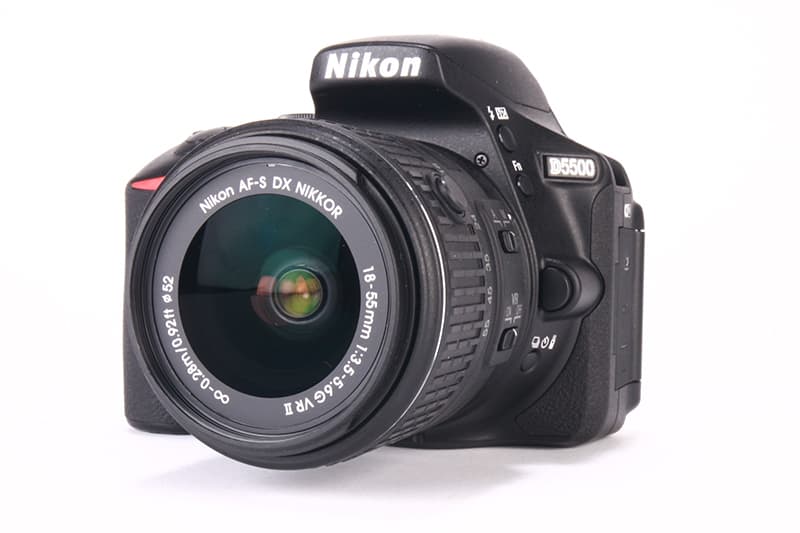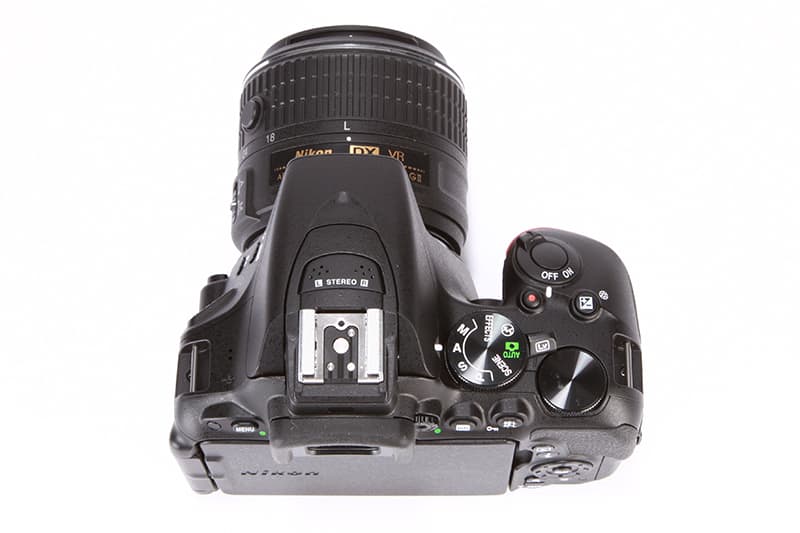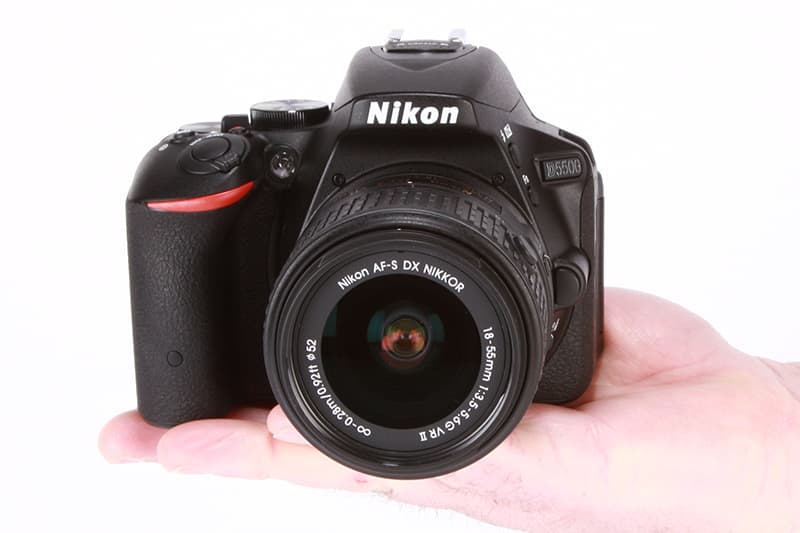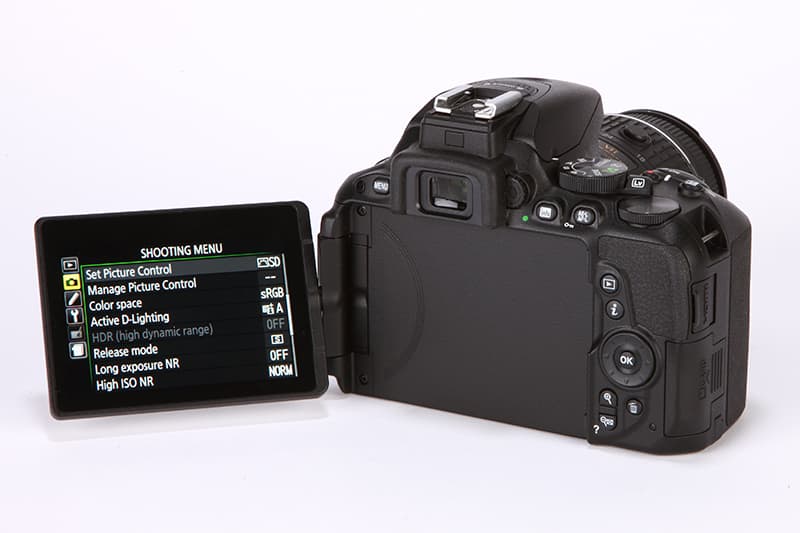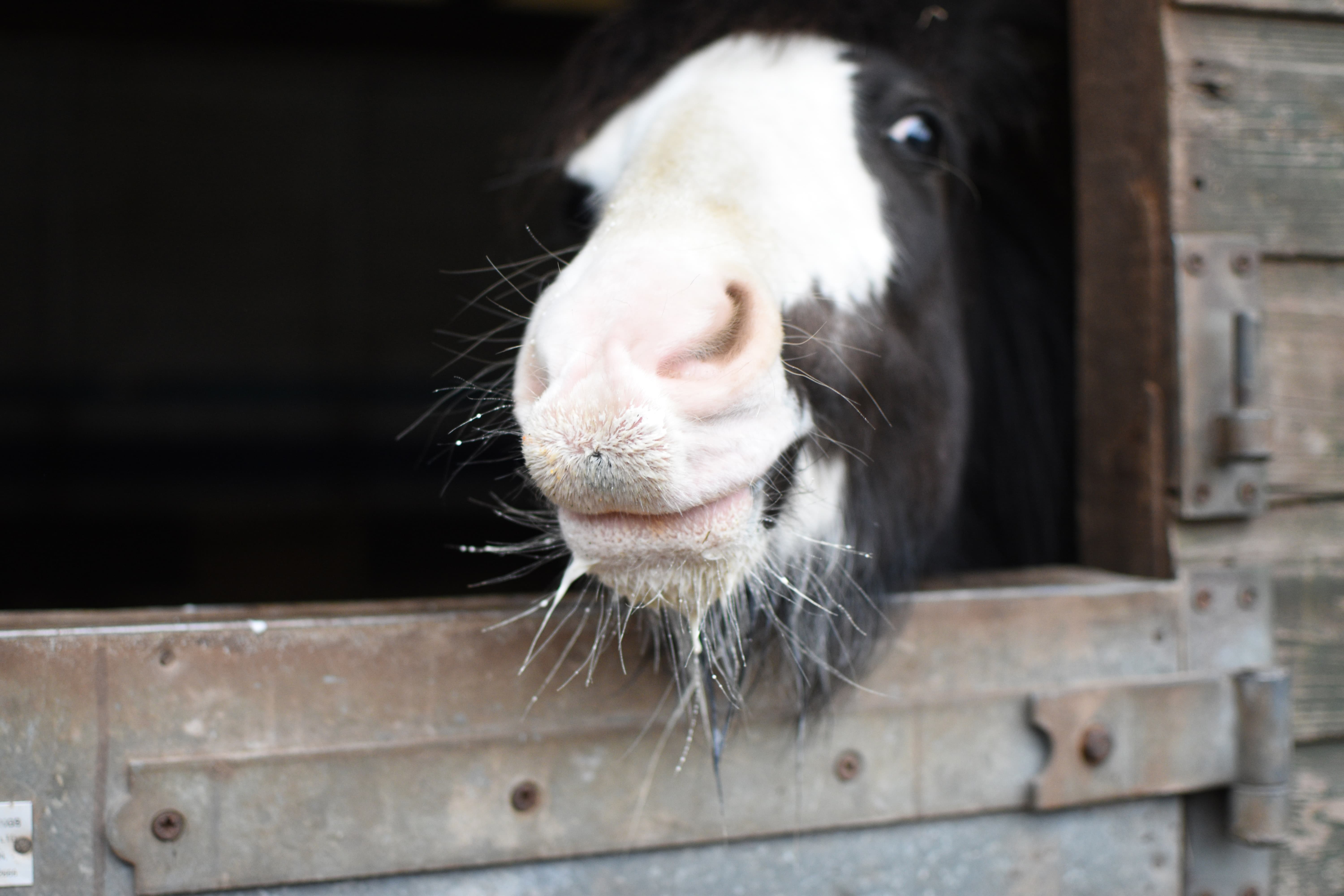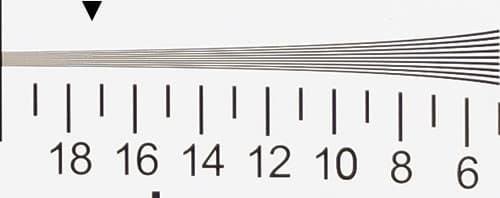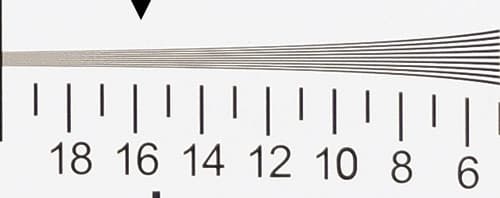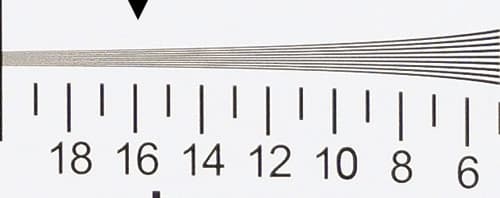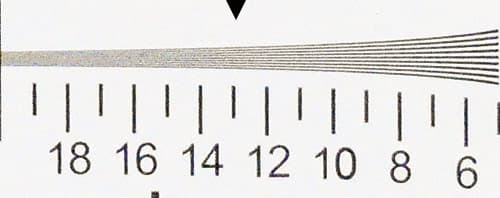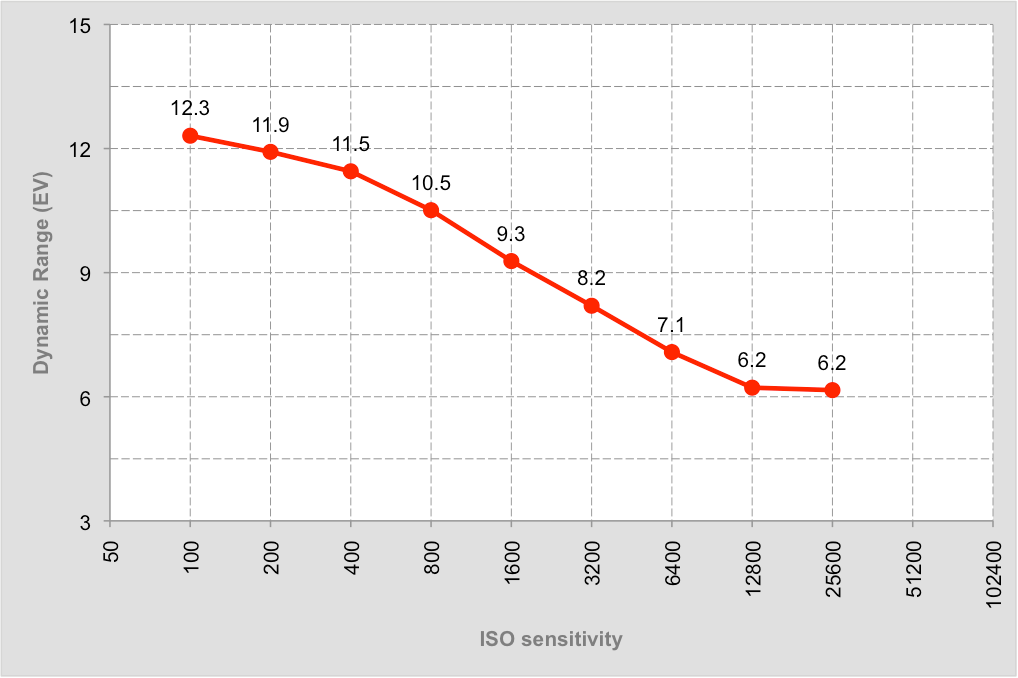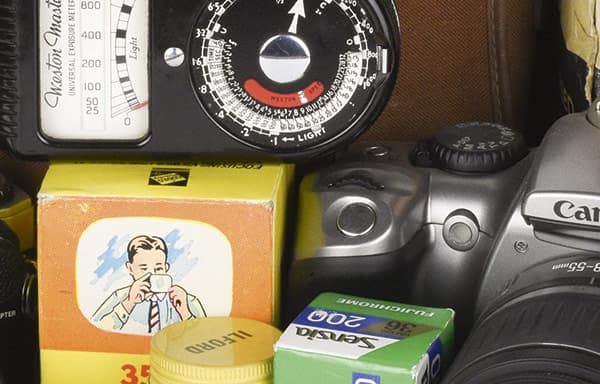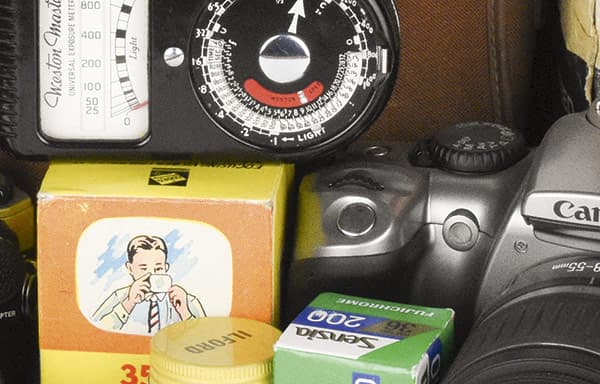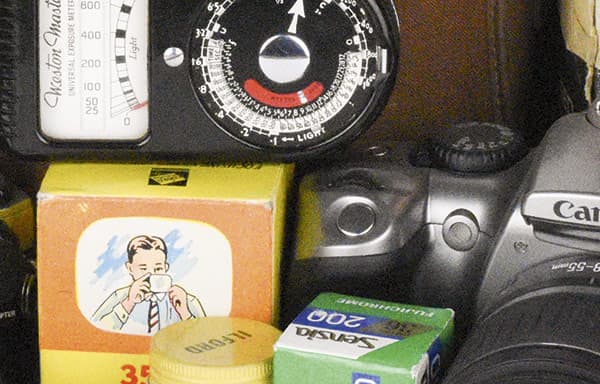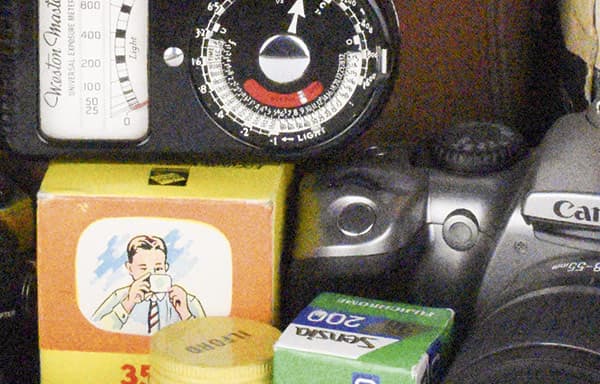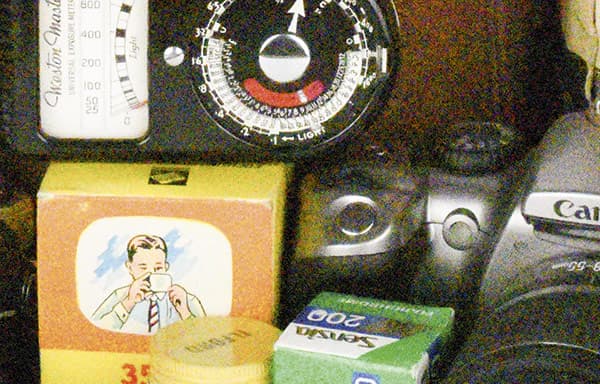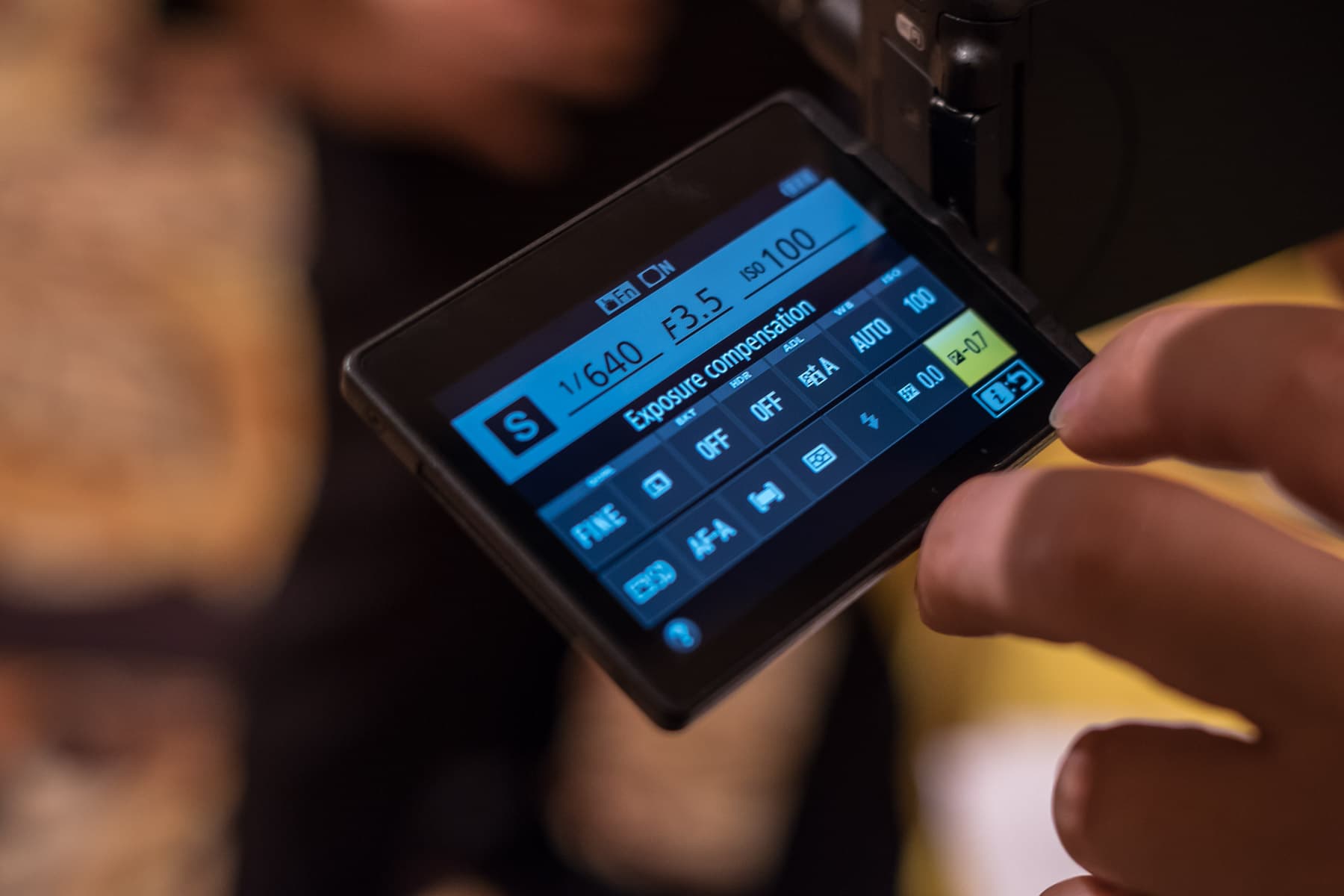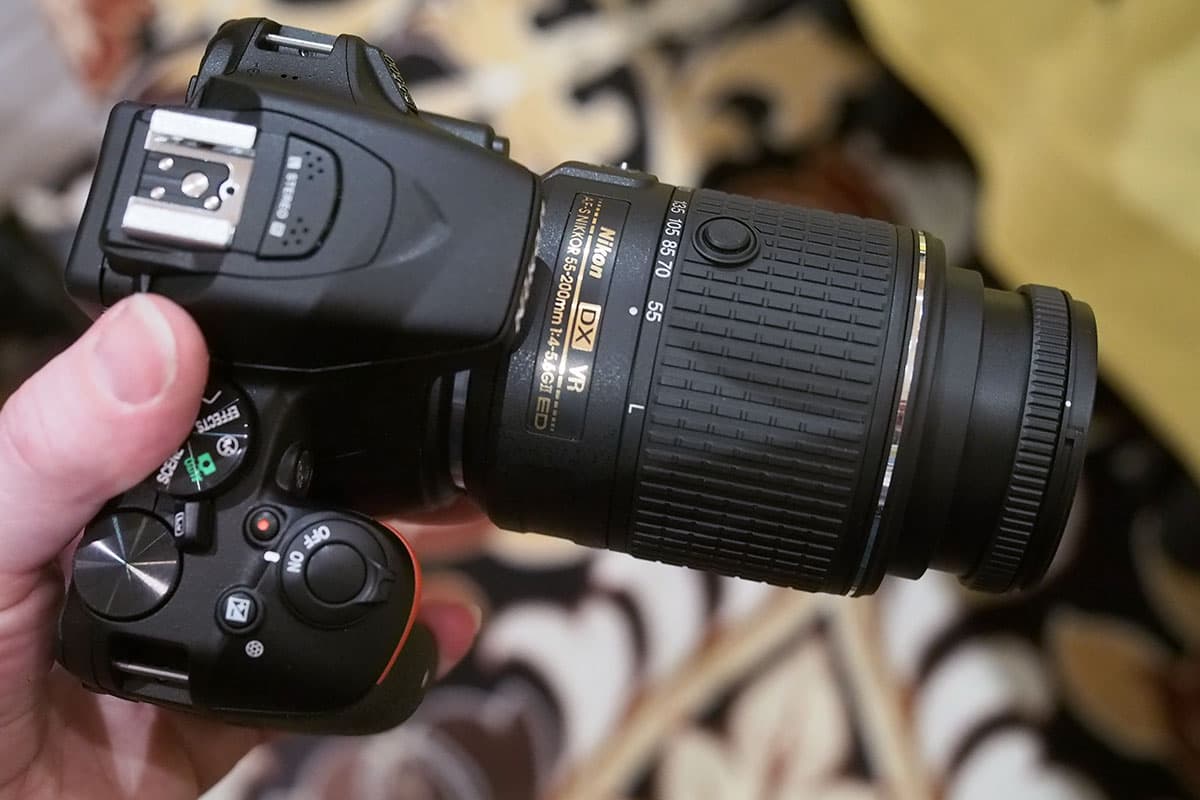Nikon D5500 Review – at a glance
- 24.2-million-pixel DX-format sensor
- ISO 100-12,800 (expandable to 25,600)
- Built-in Wi-fi connects to Nikon Wireless Mobile Utility app
- Expeed 4 processor and 5fps shooting speed
- Full HD 1920 x 1080 pixel video recording
For Nikon, the D5000 series of cameras is a way to have multiple entry-level DSLRs to suit all budgets. Rather than upgrading a model and discontinuing the last one, Nikon keeps roughly three D5000-series models going at the same time. In most retailers today, you will likely find the Nikon’s D5200, D5300 and now, the D5500.
Differences between the cameras are subtle, but with each new incarnation comes small things that build upon what is, fundamentally, a solidly performing entry-level DSLR. At the 2014 Amateur Photographer Awards, the D5300 took the Best Entry-Level DSLR award – can the D5500 take the series up a notch?
Nikon D5500 Review – Features
A DX-format sensor with dimensions of 15.6 x 23.5mm sits inside the Nikon D5500. With a resolution of 24.2 million pixels, it is the same resolution and size as the Nikon D5500’s predecessor, the D5300. Like the D5300, the D5500 has no optical low-pass (anti-aliasing) filter, which should in turn allow its sensor to resolve a high level of detail.
However, the removal of this filter means that images from the D5500 can be affected by moiré patterning, which occurs when shooting recurring patterns such as pinstriped shirts and other similar designs. Nikon says that it feels the advantages of the added detail captured outweigh the disadvantages of potential moiré patterning. Also, it’s worth noting that it’s possible to remove a lot of moiré in post-production should it occur.
Previous entries in the D5000 series have seen upgrades made to the processor, but the D5500 doesn’t follow suit. It features the same Expeed 4 processor as the D5300, and the same 5fps shooting speed as boasted by the D5300 and D5200. Though it is likely that, as a new camera, there has been tweaks made to some algorithms to achieve better in-camera noise reduction in JPEG images, as well as more advanced calculations obtained from the 2016-pixel RGB colour sensor. This could mean marginally better colour accuracy and potentially faster autofocus.
The D5300 has a native ISO sensitivity spanning ISO 100-12,800, plus an expanded H1 setting equivalent to ISO 25,600. Perhaps Nikon is hinting at better in-camera processing by featuring the very same ISO sensitivity range on the D5500, though now ISO 100-25,600 is all native, rather than including a special expanded setting.
The D5300 introduced built-in Wi-Fi and GPS connectivity to the series, but while the new D5500 retains Wi-Fi, GPS has been removed. Instead a GP-1A GPS module will need to be purchased separately (£189) for those users wishing to geotag images. This is somewhat disappointing, though for many users it is a feature that goes largely unused.
Thankfully, the Wi-Fi connectivity is very good, allowing users to connect to the camera from a smart device using the free Nikon Wireless Mobile Utility app – available for both Android and iOS. From there, users can share images online, download them to their devices and also wirelessly control their cameras. A workaround to make up for the lack of GPS is to add the location data of your smart device to images when they’re uploaded, but this does not offer the same functionality as the old GPS module of the earlier camera.
Following the lead of Nikon’s D810 and D750, the D5500 has a new ‘flat’ picture style. This allows users to capture a low-contrast, low-clarity image with minimal sharpening. The intention is to give users shooting video a high-dynamic range piece of footage that is perfect for colour grading and sharpening in post-production.
Other than the flat profile, the video functionality is largely unchanged from the D5300: full HD 1920 x 1080-pixel video recording at frame rates of 60p, 50p, 30p, 25p, 24p, as well as other, lower-resolution formats. However, the act of shooting video is greatly improved thanks to the vari-angle touchscreen – more on this later.
On top of the camera is a hotshoe and a built-in microphone that records stereo sound in video footage. There is also the option to attach an external microphone via the mic port.
 Take a look at our Nikon D5500 sample image gallery
Take a look at our Nikon D5500 sample image gallery
Nikon D5500 Review – Build and Handling
Nikon’s engineers have been busy over the last few years giving its DSLR line-up a structural makeover. With the D5300 we saw Nikon adopt a brand-new monocoque structuring for the camera, which was taken up by the D750 a few months later. This design does away with the conventional metal chassis and polycarbonate exoskeleton and instead uses a single shell constructed from thermoplastic, which is reinforced with carbon fibre. As a result, the cameras can be made slightly smaller, and lighter too. At 420g body only, the D5500 is 60g less than the D5300.
In terms of size, the D5300 measured 125 x 98 x 76mm, whereas the new D5500 measures 124 x 97 x 70mm. Comparing the D5300 to the D5500 on paper would have you believe that the D5300 has the bigger grip. However, while the dimensions are slightly larger, the redesigned body of the D5500 gives a far more pronounced grip and a much deeper gap between the lens and handgrip. It’s a design feature we praised highly in the D750 and it’s great to see the same style rolled out on the D5500. I found, when walking around with large lenses, the camera now sits more comfortably in the hand than its predecessor.
Being at the upper end of Nikon’s entry-level DSLR line-up, there are minimal buttons and the layout is very straightforward. There are slight button changes compared to the D5300: the info button has moved from above the shutter button to next to the eyepiece, which is where the i button used to be housed on the D5300; instead, the i button is now positioned just above the D-pad, making it much closer and easier to reach. Many of the core controls can be adjusted by tapping the i button and users can see the values on the rear LCD.
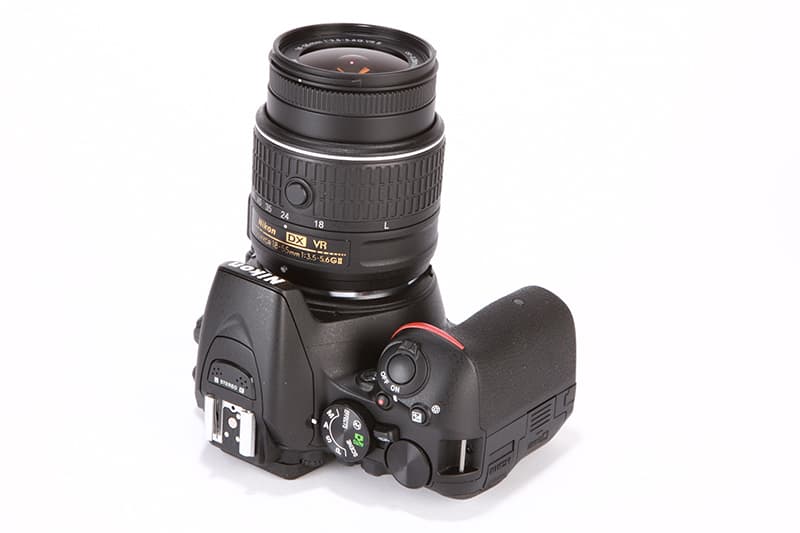
The deep grip of the D5500 makes it pleasant to hold; it feels secure even with longer lenses attached
Now though, Nikon has added a touchscreen, so as well as using the rear dial to scroll through values and settings, there’s the option to tap up/down and select things via the LCD screen. This gives a different user experience and those who are au fait with touchscreens will likely find this their go-to method. Of course, more physical controls are great, particularly for the professional who knows their camera like the back of their hand, but when using cameras with very few designated buttons to control things, it’s a great help to have an intuitive touchscreen interface by which to adjust controls.
With a little menu diving through custom settings, it’s possible to select different controls linked with the LCD. For example, it’s possible to slide your thumb across the LCD to adjust ISO sensitivity while looking through the viewfinder. It is also possible to place one of the focus points wherever desired in the frame using the LCD. In all, this a nice feature to have.
Nikon D5500 Review – Viewfinder and Screen
In the D5300, we saw a redesigned pentamirror system inside the viewfinder that allowed a 0.82x magnification compared to the 0.78x magnification in the D5200. This same specification is carried over to the D5500, resulting in a reasonably large and clear viewfinder.
Just like the D5300, the D5500 has a 1.04-million-dot, vari-angle LCD. However, this screen now boasts touchscreen functionality, which greatly adds to the usability of the camera. Overall, the touchscreen is responsive and touch controls work very well. Video users will find the ability to change settings in video, without physical buttons, great as they won’t nudge the camera out of position and the button presses won’t be audible. Also, when using the vari-angle screen to shoot at high angles, the ability to tap the touchscreen to activate the shutter is a very welcome feature – though what I find most useful is pinch zooming to check focus quickly.
In terms of resolution and colour, there’s nothing to complain about with the D5500. Colours are clear, punchy and true to the scene on the back of the camera, and the screen’s refresh rate is also very good. Overall, the screen resolution is on a par, or better than, most entry-level DSLRs.
Nikon D5500 Review – Focusing
 Take a look at our Nikon D5500 sample image gallery
Take a look at our Nikon D5500 sample image gallery
A total of 39 AF points, including nine cross-type points, are featured inside the D5500, as is the Multi-CAM 4800DX focusing sensor. This is the same focusing set-up used by the D5200 and the D5300, which is no bad thing. In good light, the focusing locks on straight away, typically taking only a fraction of a second.
When faced with challenging low-light conditions, the focusing still finds its target in under a second with a little help from the AF assist beam.
Autofocusing in live view is still rather slow, but its saving grace is that it’s consistent and accurate when it does lock on.
Nikon D5500 Review – Performance
Metering
Like the D5300, the D5500 features a 2016-pixel metering sensor with settings for matrix, centreweighted and spot metering. These do a good job of calculating a good exposure across the vast majority of scenes. I found that in high-contrast scenes, the first areas to become clipped are the highlights. This is simply fixed by dialling down the exposure compensation and, thanks to the good dynamic range of the D5500’s sensor, there’s plentiful room to lighten the shadow areas in-camera or in post-production. It would have been quite an advantage to have seen the highlight protection metering from the D810 and D750 handed down to the D5500, but I guess this is a feature reserved for premium models.
White balance and colour
Using the same hardware as the D5300, the D5500 has excellent colour rendition. Even though a large portion of my shooting with the camera was carried out on cold winter days in England, the D5500 still delivered tonally rich images. Bark of trees, green grass and the odd flecks of coloured flowers were all well saturated and punchy. Among entry-level cameras, the D5500 really does deliver on colour rendition.
Nikon D5500 Review – Image Quality
With its 24-millon-pixel DX format sensor that lacks an optical low-pass filter, the D5500 is capable of recording huge amounts of detail, as long as a suitably sharp lens is used. Its JPEG output exhibits Nikon’s trademark punchy colour rendition, with rich, saturated colours. As with the company’s other SLRs, dynamic range is impressive, with a wide range of tones recorded from the highlights to the deepest shadows. Indeed to make full use of the sensor’s capabilities you’ll need to either engage Active D-Lighting when shooting JPEGs, or post-process from raw. Overall you’d have to spend a lot more money to get significantly better image quality.
Resolution
In our test chart shots the D5500 is capable of cleanly resolving up to around 3400l/ph at ISO 100, with strong maze-like aliasing visible at higher frequencies that’s typical of cameras without low-pass filters. At first resolution drops only gradually as the ISO is increased, to around 3200 l/ph at ISO 1600. But from this point onwards it deteriorates more rapidly, to about 2800 l/ph at ISO 3200, and barely 2400 l/ph at ISO 25600.
Nikon D5500 Review – Image Quality: Dynamic Range
The D5500 gives good results in our Applied Imaging tests, typical of what we’d expect from a modern APS-C sensor. A dynamic range of 12.3 EV at ISO 100 indicates that raw files should contain plenty of additional recoverable shadow detail. Good results are maintained through to ISO 400, but then results start to fall more quickly. At ISO 1600 a value of 9.3 EV indicates that images should still be very useable, but 8.2 EV at ISO 3200 is on the margin of acceptability. At the top three settings most shadow detail will be swamped by noise.
Nikon D5500 Review – Image Quality: Detail and Noise
The D5500’s JPEG images at lower ISO sensitivities of ISO 100-400 are superb, as the in-camera processing reduces the small amount of noise present in the raw images without sacrificing much of the detail. It’s only at ISO 800 that I started to notice obvious luminance noise, mostly localized in the shadow areas; but looking really closely, low contrast detail starts to disappear too. However the camera continues to give entirely usable files up to ISO 3200, and it’s not until ISO 6400 that processing starts to become quite aggressive, and detail starts to breakdown seriously. The highest settings are, as usual, both really only for use when absolutely necessary, with ISO 25600 in particular giving large amounts of chroma noise and little in the way of fine detail.
Nikon D5500 Review – Conclusion
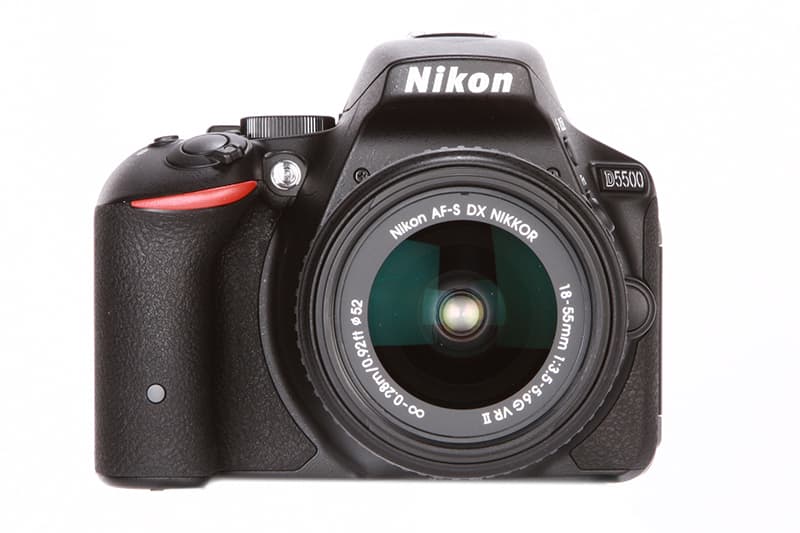 You have only to cast your eyes over the specification sheet of the D5500 to see how strikingly similar it is to the D5300. With the same sensor, AF system and metering chip, its core credentials remain practically identical. This isn’t necessarily a bad thing, though. We certainly aren’t dissatisfied with the image quality, metering, colour or autofocus. In fact, they are brilliant. Images are highly detailed with consideration to sensor size, and noise is very well controlled even at higher ISO sensitivities. Although the AF in live view is a touch slow, the regular autofocusing is extremely quick in both continuous and single modes. There’s also a good range of focus points and coupling the camera with a faster optic than the standard kit lens really shows what the D5500 can do. Colour rendition is also one of the D5500’s strong points, delivering very dense, tonally rich images with punchy colours.
You have only to cast your eyes over the specification sheet of the D5500 to see how strikingly similar it is to the D5300. With the same sensor, AF system and metering chip, its core credentials remain practically identical. This isn’t necessarily a bad thing, though. We certainly aren’t dissatisfied with the image quality, metering, colour or autofocus. In fact, they are brilliant. Images are highly detailed with consideration to sensor size, and noise is very well controlled even at higher ISO sensitivities. Although the AF in live view is a touch slow, the regular autofocusing is extremely quick in both continuous and single modes. There’s also a good range of focus points and coupling the camera with a faster optic than the standard kit lens really shows what the D5500 can do. Colour rendition is also one of the D5500’s strong points, delivering very dense, tonally rich images with punchy colours.
The main difference between the D5500 and its predecessor is the body shape, which draws inspiration from the more recent D750. The front grip has been made very deep and is an absolute delight to hold. Also, factor in that Nikon has managed to shave 60g off the overall weight compared to the D5300 and it adds a lot to the handling of the camera.
The other significant change is that touchscreen functionality has been added to the D5500. It provides a different user experience, one that I think many first-time DSLR owners will find favourable. When working on a tripod where buttons aren’t easily accessible, the touchscreen is great for quick changes. Overall, Nikon has built upon the solid foundation of the D5300 and made a couple of changes that have improved upon the camera further.
Nikon D5500 First Look
At the Pre-CES Digital Experience event we had a chance to get our hands on the new Nikon D5500 enthusiast DSLR. In 2014, we awarded the D5500’s predecessor, the Nikon D5300 the Amateur Photographer Consumer Camera of the Year, so the expectations for the D5500 are obviously high.
While the D5300 was a solidly impressive camera, as we noted in our review, it took criticism for being a fairly minor upgrade. By the looks of things, the story seems similar with the Nikon D5500 – it sports the same 24.2-million-pixel sensor as the D5300, with no optical low-pass filter, and also keeps the Expeed 4 processor. Its video specs are also identical, with the same HD 1080/60p video shooting capabilities.
So what is new? First and foremost, the D5500 brings a 3.2-inch fully articulated touchscreen with a resolution of 1,037,000-dots. The touchscreen does everything you’d expect – allows the user to focus, adjust settings and shoot – but also comes with a Touch Fn function, which allows the user to make quick adjustments with a finger swipe while using the viewfinder. This could be particularly useful for moving the autofocus area around the frame quickly while shooting, but we’ll have to put the camera thought its paces in real-world shooting to decide how well it works in practice. An eye sensor by the viewfinder allows the screen to be automatically turned during eye-level shooting.
The touchscreen can also be used to change many camera settings, although crucially it does’t replace any physical controls – it only complements them. Pressing the camera’s ‘i’ button brings up the redesigned settings menu shown above; tapping a touch button then brings up a new screen for changing that parameter. This saves a lot of button-pressing when you want to change these options. It’s good to see Nikon finally catching up with its competitors in bringing a touch interface to this level of camera.
The other big draw of the D5500 is its overhauled body. Nikon bills it as ‘exceptionally portable’, and it is slightly slimmer and lighter than the D5300, with measurements of 124x97x70mm and a weight of 420g (without battery and memory card) – the D5300 weighed 480g. More importantly, the grip shape has been substantially overhauled, with a much deeper cut-out into the body to accommodate your fingers compared to the D5300. This may not seem like much, but it makes the camera feel noticeably more secure and comfortable in your hand.
The D5500 is able to shoot within an ISO range of 100-25,600, and it features a 39-point AF system with cross-type points in the sensor. Nikon claims that this contrast detect AF system will be 20% faster than that of the D5300 when used in live view.
However, the D5500 doesn’t keep everything from the D5300 – it drops the GPS functionality that was present on the earlier model. While it still has Wi-fi, so connectivity is possible, some photographers may be disappointed with the loss of the ability to instantly geotag their images, particularly in a camera designed to be portable enough to take everywhere.
The D5500 will be available in red or black versions, for around £640 body only, or £720 in a kit with the Nikon 18-55mm f/3.5-5.6 VR II lens. Nikon has also announced a revised version of its budget telephoto zoom, the AF-S DX Nikkor 55-200mm f/4.5-5.6 VR II shown above, which will cost around £230. Like Nikon’s latest 18-55mm kit zoom, it can be retracted to give a slightly more portable package for transport.
Nikon D5500 Review: First Impressions
At first glance there appears to be few differences between the D5500 and the D5300 cameras. The 24.2-million-pixel DX-format sensor is essentially the same as on the previous D5300, so is the Expeed 4 processor, and the 39-point autofocusing system. None of these similarities is a bad thing, given the excellent performance of the D5300. Overall, like many recent cameras, the D5500 looks like a sensibly iterative update to the previous model, rather than a big step forward.
However, the big difference on the D5500 is that it’s the first ever Nikon DSLR to feature a touch-screen display. The body has also changed and been redesigned making the grip deeper. In-hand the camera feels very secure thanks to the reworked grip, while the touch screen is responsive and benefits from a reasonably user-friendly interface with well spaced touch-buttons. In addition, the ability to use the touchscreen to zoom into images to check focus should give a more intuitive experience than the Nikon D5300. Check back in the coming weeks for our full review of the camera.

